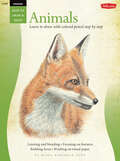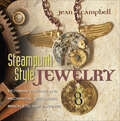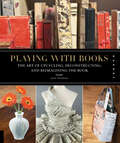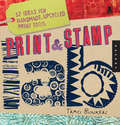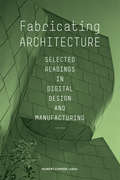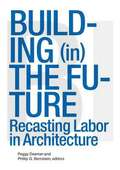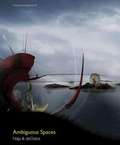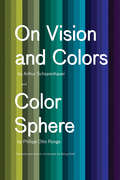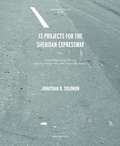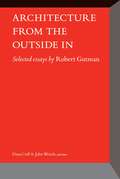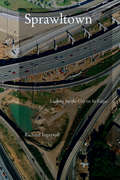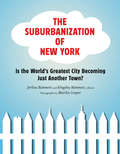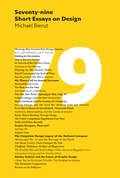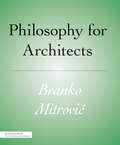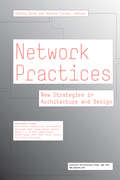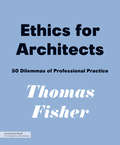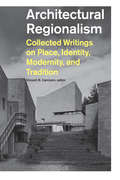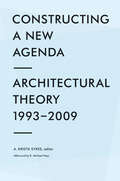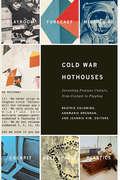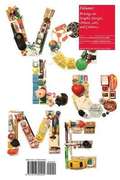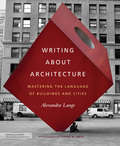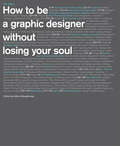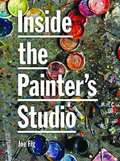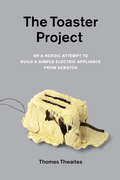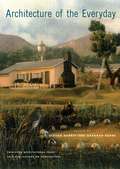- Table View
- List View
Drawing: Learn How to Draw with Colored Pencil, Step-by-Step (How to Draw & Paint)
by Debra Kauffman YaunAn easy to read, how-to guide with complete instructions for creating lifelike portraits of wild and domestic animals using colored pencils.In this comprehensive, thirty-two–page book, accomplished artist Debra Kauffman Yaun shares her artistic insights and techniques for creating strikingly realistic animal drawings in colored pencil. The book opens with essential information on choosing tools and materials, understanding color theory, and creating basic pencil strokes. It then covers special colored pencil techniques, such as hatching, burnishing, layering, and blending. Finally, the author demonstrates how to accurately depict an assortment of adorable animals—including favorite family pets, wildlife, and birds—in a series of clear, step-by-step lessons. In-depth, easy-to-follow instructions allow aspiring artists to develop their drawing skills, guiding them from simple sketches to the final flourishes.
Steampunk Style Jewelry: Victorian, Fantasy, and Mechanical Necklaces, Bracelets, and Earrings
by Jean CampbellThis how-to jewelry-making book features the work of an array of invited jewelry designers influenced by the growing Steampunk trend. In Steampunk circles, jewelry-makers are often master metalsmiths who combine found objects with fine metals to create elaborate pieces. In Steampunk-Style Jewelry, the projects focus on "no fire" techniques—like simple stringing, wirework, hammering, stamping, gluing, stitching, and off-loom beadwork—so that even a beginner can create pieces in the style. Each project provides a complete materials and tools list, step-by-step instructions, and clear illustrations. This book offers a broad overview of a growing design trend that is part of the literary, industrial design, fashion, and popular culture scene. Readers will learn about the art movement through the many photographic sidebars that explore the many aspects of the trend.
Playing with Books: The Art of Upcycling, Deconstructing, and Reimagining the Book
by Jason ThompsonA guide to repurposing used books and pages into unique, accessible art projects—the perfect gift for artists, crafters and book lovers.In these pages, Jason Thompson has curated an extensive and artistic range of both achievable upcycled crafts made from books and book pages and an amazing gallery that contains thought-provoking and beautiful works that transform books into art.The content encompasses a wide range of techniques and step-by-step projects that deconstruct and rebuild books and their parts into unique, recycled objects. The book combines in equal measure bookbinding, woodworking, paper crafting, origami, and textile and decorative arts techniques, along with a healthy dose of experimentation and fun. The beautiful high-end presentation and stunning photography make this book a delightful, must-have volume for any book-loving artist or art-loving book collector.
Print & Stamp Lab: 52 Ideas for Handmade, Upcycled Print Tools
by Traci Bunkers"Tells readers how to turn everyday materials and objects into custom stamps and printmaking tools . . . The graphics are colorful and inspiring." —Barbara Delaney, Cloth Paper ScissorsArtist and popular workshop instructor Traci Bunkers can turn just about anything into an interesting stamp, printing block, or tool. In this book, she shows readers how to see overlooked, everyday objects in a new way, and how to "MacGyver" them like she does. You'll learn to create fifty-two easy-to-use print blocks and stamp tools, all from inexpensive, ordinary, and unexpected materials—string, spools, bandages, flip flops, ear plugs, rubber bands, school erasers, and a slew of other repurposed and upcycled items. The book also shows how to use those simple tools to make gorgeous multi-layered prints and patterns that can be used to enhance journal covers, stationery, fabrics, accessories, and more.
Fabricating Architecture: Selected Readings in Digital Design and Manufacturing
by Robert CorserIn this increasingly digitized world, any investigation of architecture inevitably leads to considerations of fabrication. But despite its omnipresence in contemporary practice and theory, digital design remains a fluid concept, its development and current influence discussed in scattered articles.
Building (in) the Future
by Phillip Bernstein Peggy DreamerThere is no denying the transformational role of the computer in the evolution of contemporary architectural practice. But does this techno-determinist account tell the whole story? Are humans becoming irrelevant to the overall development of the built environment? Bulding (in) the Future confronts these important questions by examining the fundamental human relationships that characterize contemporary design and construction. Thirty-four contributors including designers, engineers, fabricators, contractors, construction managers, planners, and scholars examine how contemporary practices of production are reshaping the design/construction process
Pamphlet Architecture 29
by Ricardo De Ostos Nannette JackowskiAmbiguous Spaces, the newest installment in the Pamphlet Architecture series and a return to Pamphlet's own progressive roots, features the architectural fictions "The Pregnant Island" and "Nuclear Breeding." These two projects develop alternative urban concepts that address the challenges presented by the specific situations and social dynamics described in controversial locations such as the Brazilian Tucurui Dam, the Three Gorges Dam in China, and former English nuclear test sites. Using narrative techniques, fictional programs, ambiguous spaces, and building devices, Ambiguous Spaces explores people, communities, and even entire cities oppressed by a lack of freedom.
On Vision and Colors; Color Sphere: On Vision And Colors; Color Sphere
by Arthur Schopenhauer Philipp Otto Runge Georg StahlDuring the first two decades of the nineteenth century, two of the most significant theoretical works on color since Leonardo da Vinci's Trattato della Pittura were written and published in Germany: Arthur Schopenhauer's On Vision and Colors and Philipp Otto Runge's Color Sphere. For Schopenhauer, vision is wholly subjective in nature and characterized by processes that cross over into the territory of philosophy. Runge's Color Sphere and essay "The Duality of Color" contained one of the first attempts to depict a comprehensive and harmonious color system in three dimensions. Runge intended his color sphere to be understood not as a product of art, but rather as a "mathematical figure of various philosophical reflections." By bringing these two visionary color theories together within a broad theoretical context—philosophy, art, architecture, and design—this volume uncovers their enduring influence on our own perception of color and the visual world around us.
Pamphlet Architecture 26
by Jonathan D. SolomonThe thirteen projects take as their subject a site of contested transportation infrastructure--the Sheridan Expressway. By proposing new typologies for this site, these studies seek to mediate the spaces in the city where local and regional meet. Referencing the introduction of the modern parkway into the Bronx, the grading of the Central Park transverse roads, and other works that have redefined the relationship between parks and roads, author Jonathan Solomon suggests a system by which large projects might again be built in American cities.
Architecture From the Outside In: Selected Essays by Robert Gutman
by Robert Gutman Dana Cuff John WriedtArchitecture and sociology have been fickle friends over the past half century: in the 1960s, architects relied on sociological data for design solutions and sociologists were courted by the most prestigious design schools to lecture and teach. Twenty years later, at the height of postmodernism, it was passe to be concerned with the sociological aspects of architecture. Currently, the rising importance of sustainability in building, not to mention an economical crisis brought on in part by a real-estate bubble, have forced architects to consider themselves in a less autonomous way, perhaps bringing the profession full circle back to a close relationship with sociology. Through all these rises and dips, Robert Gutman was a strong and steady voice for both architecture and sociology. Gutman, a sociologist by training, infiltrated architecture's ranks in the mid-1960s and never looked back. A teacher for over four decades at Princeton's School of Architecture, Gutman wrote about architecture and taught generations of future architects, all while maintaining an "outsider" status that allowed him to see the architectural profession in an insightful, unique way.
Sprawltown: Looking for the City on Its Edges
by Ingersoll RichardSprawl. The word calls to mind a host of troublesome issues such as city flight, runaway suburban development, and the conversion of farmland to soulless housing developments. In Sprawltown, architectural historian Richard Ingersoll makes the surprising claim that sprawl is an inevitable reality of modern life that should be addressed more thoughtfully and recognized as its own new form of urbanism rather than simply being criticized and condemned.In five thought-provoking chapters, covering topics such as tourism, film, and the automobile, Ingersoll takes the position that any solution to the problems of sprawl—including pressing issues like resource use and energy waste—must take into consideration its undeniable success as a social milieu. No screed against the suburb, this book offers a more sophisticated and nuanced view of the way we think about its rapid development and growth.
The Suburbanization of New York: Is the World's Greatest City Becoming Just Another Town?
by Martha Cooper Kingsley Hammett Jerilou HammettThe city that never sleeps also never stops changing. And while New Yorkers are renowned for their trendsetting, this thought-provoking book argues that New York City itself has become a follower rather than a leader. Once-distinctive streets and neighborhoods have become awash in generic stores, apartment boxes, and garish signs and billboards. Legendary neighborhoods (Little Italy, Hell's Kitchen, Harlem, the Lower East Side) have been smoothed over with cute monikers, remade for real-estate investment and for sale to the highest bidder.
Seventy-nine Short Essays on Design
by Michael BeirutSeventy-nine Short Essays on Design brings together the best of designer Michael Bierut's critical writing—serious or humorous, flattering or biting, but always on the mark. Bierut is widely considered the finest observer on design writing today. Covering topics as diverse as Twyla Tharp and ITC Garamond, Bierut's intelligent and accessible texts pull design culture into crisp focus. He touches on classics, like Massimo Vignelli and the cover of The Catcher in the Rye, as well as newcomers, like McSweeney's Quarterly Concern and color-coded terrorism alert levels. Along the way Nabakov's Pale Fire; Eero Saarinen; the paper clip; Celebration, Florida; the planet Saturn; the ClearRx pill bottle; and paper architecture all fall under his pen. His experience as a design practitioner informs his writing and gives it truth. In Seventy-nine Short Essays on Design, designers and nondesigners alike can share and revel in his insights.
Philosophy for Architects
by Branko MitrovicPhilosophy for Architects is an engaging and easy-to-grasp introduction to philosophical questions of interest to students of architectural theory. Topics include Aristotle's theories of "visual imagination" and their relevance to digital design, the problem of optical correction as explored by Plato, Hegel's theory of zeitgeist, and Kant's examinations of space and aesthetics, among others. Focusing primarily on nineteenth- and twentieth-century philosophy, it provides students with a wider perspective concerning philosophical problems that come up in contemporary architectural debates.
Network Practices: New Strategies in Architecture and Design
by Anthony Burke Therese TierneyThe twin revolutions of the global economy and omnipresent Internet connectivity have had a profound impact on architectural design. Geographical gaps and, in many cases, architecture's tie to the built world itself have evaporated in the face of our new networked society. Form is now conceptualized by architects, engineers, and artists as reflexive, contingent, and distributed. The collected essays in Network Practices capture this unique moment in the evolution of design, where crossing disciplines, spatial interactions, and design practices are all poised to be reimagined. With contributions by architects, artists, computer programmers, and theorists and texts by Reinhold Martin, Dagmar Richter, Michael Speaks, and others, Network Practices offers an interdisciplinary analysis of how art, science, and architecture are responding to rapidly changing mobile, wireless, and information embedded environments
Ethics for Architects: 50 Dilemmas of Professional Practice (Architecture Briefs Ser.)
by Thomas FisherIn this new Architecture Brief, Ethics for Architects, Thomas Fisher presents fifty case studies representing a broad range of ethical dilemmas facing today's architects, from questions regarding which clients to work for, to the moral imperatives of reclaiming building materials for construction instead of sending them to landfills. This timely book features newly relevant interpretations adapted to the pervasive demands of globalization, sustainability, and developments in information technology. Fisher's analysis of architecture's thorniest ethical issues are written in a style that is accessible to the amateur philosopher and appealing to professional architects and students alike. Thought-provoking and essential, Ethics for Architects is required reading for any designer who wants to work responsibly in today's complex world.
Architectural Regionalism: Collected Writings on Place, Identity, Modernity, and Tradition
by Vincent B. CanizaroIn this rapidly globalizing world, any investigation of architecture inevitably leads to considerations of regionalism. But despite its omnipresence in contemporary practice and theory, architectural regionalism remains a fluid concept, its historical development and current influence largely undocumented. This comprehensive reader brings together over 40 key essays illustrating the full range of ideas embodied by the term. Authored by important critics, historians, and architects such as Kenneth Frampton, Lewis Mumford, Sigfried Giedion, and Alan Colquhoun, Architectural Regionalism represents the history of regionalist thinking in architecture from the early twentieth century to today.
Constructing a New Agenda: Architectural Theory 1993-2009
by A. Krista Sykes K. Michael HaysThis follow-up to Kate Nesbitt's best-selling anthology Theorizing a New Agenda collects twenty-eight essays that address architecture theory from the mid-1990s, where Nesbitt left off, through the present. Kristin Sykes offers an overview of the myriad approaches and attitudes adopted by architects and architectural theorists during this era. Multiple themes—including the impact of digital technologies on processes of architectural design, production, materiality, and representation; the implications of globalization and networks of information; the growing emphasis on sustainable and green architecture; and the phenomenon of the 'starchitect' and iconic architecture—appear against a background colored by architectural theory, as it existed from the 1960s on, in a period of transition (if not crisis) that centers around the perceived abyss between theory and practice. Theory's transitional state persists today, rendering its immediate history particularly relevant to contemporary thought and practice.While other collections of recent theoretical writings exist none attempt to address the situation as a whole, providing in one place key theoretical texts of the past decade and a half. This book provides a foundation for ongoing discussions surrounding contemporary architectural thought and practice, with iconic essays by Greg Lynn, Deborah Berke, Sanford Kwinter, Samuel Mockbee, Stan Allen, Rem Koolhaas, William Mitchell, Anthony Vidler, Micahel Hays, Reinhold Martin, Reiser + Umemoto, Glenn Murcutt, William McDonough, Micahael Braungart, Michael Speaks, and many more.
Cold War Hothouses: Inventing Postwar Culture, from Cockpit to Playboy
by Beatriz Colomina Annemarie Brennan Jeannie KimThe technological innovation and unprecedented physical growth of the cold war era permeated American life in every aspect and at every scale. From the creation of the military-industrial complex and the beginnings of suburban sprawl to the production of the ballpoint pen and the TV dinner, the artifacts of the period are a numerous and diverse as they are familiar. Over the past half-century, our awe at the advances of postwar society has softened to nostalgia, and our affection for its material culture has clouded our memories of the enormous spatial reorganizations and infrastructural transformations that changed American life forever.
Volume
by Kenneth Fitzgerald Rudy VanderlansVolume--a word that refers to sound, collections, and the measurement of space--is a crucial characteristic of both graphic design and popular music. While expressing different aspects of these two pervasive cultural mediums, the term also introduces a discussion on their many links. Volume: Writings on Graphic Design, Music, Art, and Culture is a collection of both new and classic writings by frequent Emigre contributor and educator Kenneth FitzGerald that survey the discipline of graphic design in context with the parallel creative fields of contemporary music and art. The topics of the writings are diverse: the roles of class in design, design education, Lester Bangs and Creem magazine, pornography, album cover art, independent record labels, anonymity and imaginary creative identities, and design as cultural chaos-maker.
Writing About Architecture: Mastering the Language of Buildings and Cities
by Alexandra Lange Jeremy M. LangeExtraordinary architecture addresses so much more than mere practical considerations. It inspires and provokes while creating a seamless experience of the physical world for its users. It is the rare writer that can frame the discussion of a building in a way that allows the reader to see it with new eyes. Writing About Architecture is a handbook on writing effectively and critically about buildings and cities. Each chapter opens with a reprint of a significant essay written by a renowned architecture critic, followed by a close reading and discussion of the writer's strategies. Lange offers her own analysis using contemporary examples as well as a checklist of questions at the end of each chapter to help guide the writer. This important addition to the Architecture Briefs series is based on the author's design writing courses at New York University and the School of Visual Arts. Lange also writes a popular online column for Design Observer and has written for Dwell, Metropolis, New York magazine, and The New York Times. Writing About Architecture includes analysis of critical writings by Ada Louise Huxtable, Lewis Mumford, Herbert Muschamp, Michael Sorkin, Charles Moore, Frederick Law Olmsted, and Jane Jacobs. Architects covered include Marcel Breuer, Diller Scofidio + Renfro, Field Operations, Norman Foster, Frank Gehry, Frederick Law Olmsted, SOM, Louis Sullivan, and Frank Lloyd Wright.
How to Be a Graphic Designer without Losing Your Soul: Without Losing Your Soul
by Adrian ShaughnessyPublished to instant acclaim in 2005, our best selling How to Be a Graphic Designer without Losing Your Soul has become a trusted resource for graphic designers around the world, combining practical advice with philosophical guidance to help young professionals embark on their careers. This new, expanded edition brings this essential text up to date with new chapters on professional skills, the creative process, and global trends that include social responsibility, ethics, and the rise of digital culture. How to Be a Graphic Designer offers clear, concise guidance along with focused, no-nonsense strategies for setting up, running, and promoting a studio; finding work; and collaborating with clients. The book also includes inspiring new interviews with leading designers, including Jonathan Barnbrook, Sara De Bondt, Stephen Doyle, Ben Drury, Paul Sahre, Dmitri Siegel, Sophie Thomas, and Magnus Vol Mathiassen
Inside the Painter's Studio
by Joe FigInside an art gallery, it is easy to forget that the paintings there are the end products of a process involving not only creative inspiration, but also plenty of physical and logistical details. It is these "cruder," more mundane aspects of a painter's daily routine that motivated Brooklyn artist Joe Fig to embark almost ten years ago on a highly unorthodox, multilayered exploration of the working life of the professional artist. Determined to ground his research in the physical world, Fig began constructing a series of diorama-like miniature reproductions of the studios of modern art's most legendary painters, such as Jackson Pollock and Willem de Kooning. A desire for firsthand references led Fig to approach contemporary artists for access to their studios. Armed with a camera and a self-made "Artist's Questionnaire," Fig began a journey through the workspaces of some of today's most exciting contemporary artists.
The Toaster Project: Or A Heroic Attempt to Build a Simple Electric Appliance from Scratch
by Thomas Thwaites"Hello, my name is Thomas Thwaites, and I have made a toaster." So begins The Toaster Project, the author's nine-month-long journey from his local appliance store to remote mines in the UK to his mother's backyard, where he creates a crude foundry. Along the way, he learns that an ordinary toaster is made up of 404 separate parts, that the best way to smelt metal at home is by using a method found in a fifteenth-century treatise, and that plastic is almost impossible to make from scratch. In the end, Thwaites's homemade toaster—a haunting and strangely beautiful object—cost 250 times more than the toaster he bought at the store and involved close to two thousand miles of travel to some of Britain's remotest locations. The Toaster Project may seem foolish, even insane. Yet, Thwaites's quixotic tale, told with self-deprecating wit, helps us reflect on the costs and perils of our cheap consumer culture, and in so doing reveals much about the organization of the modern world.
Architecture of the Everyday
by Deborah Berke Steven HarrisOrdinary. Banal. Quotidian. These words are rarely used to praise architecture, but in fact they represent the interest of a growing number of architects looking to the everyday to escape the ever-quickening cycles of consumption and fashion that have reduced architecture to a series of stylistic fads. Architecture of the Everyday makes a plea for an architecture that is emphatically un-monumental, anti-heroic, and unconcerned with formal extravagance. Edited by Deborah Berke and Steven Harris, this collection of writings, photo-essays, and projects describes an architecture that draws strength from its simplicity, use of common materials, and relationship to other fields of study. Topics range from a website that explores the politics of domesticity, to a transformation of the sidewalk in Los Angeles' Little Tokyo, to a discussion of the work of Robert Venturi and Denise Scott Brown. Contributors include Margaret Crawford, Peggy Deamer, Deborah Fausch, Ben Gianni and Mark Robbins, Joan Ockman, Ernest Pascucci, Alan Plattus, and Mary-Ann Ray. Deborah Berke and Steven Harris are currently associate professors of architecture at Yale University, and have their own practices in New York City.
